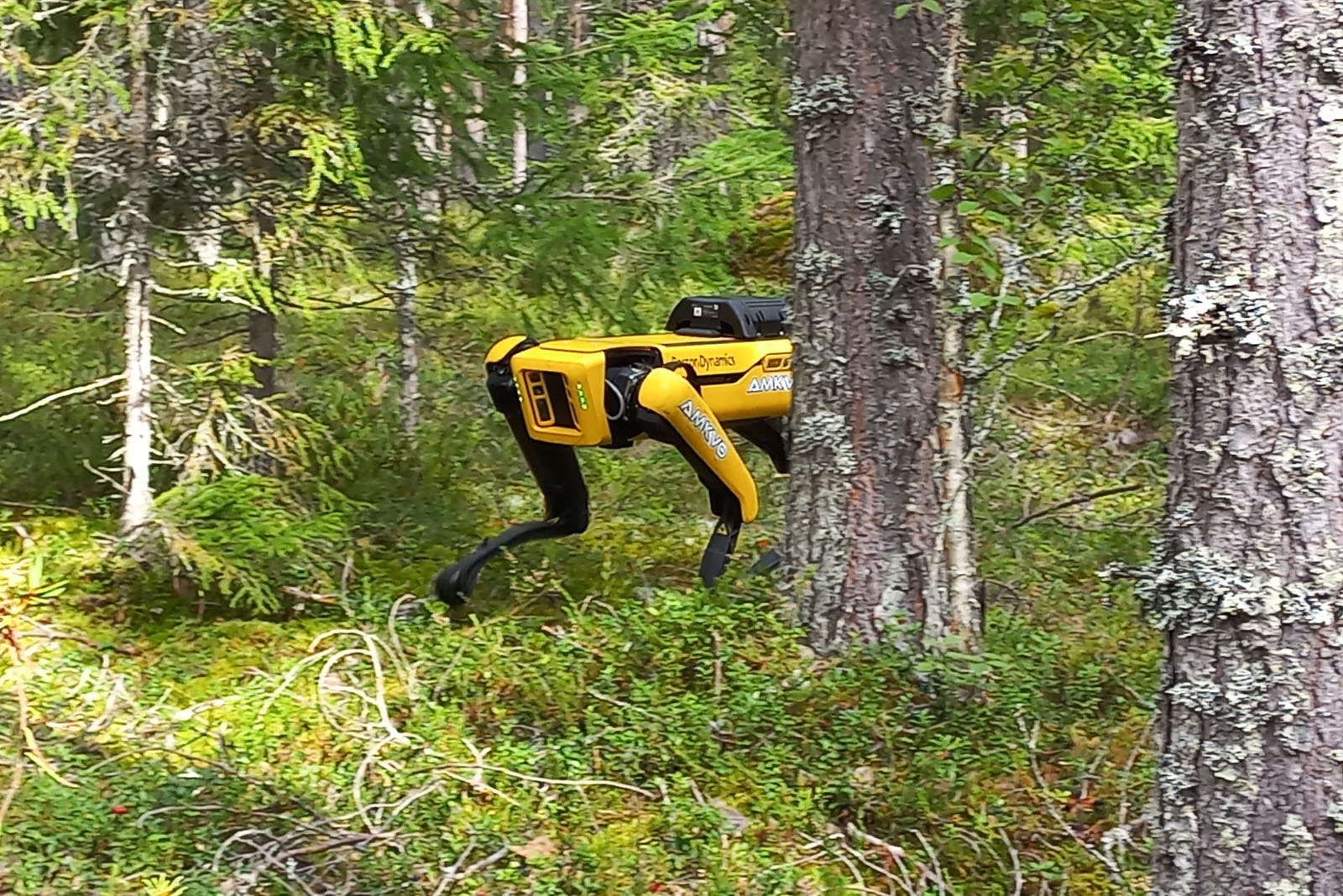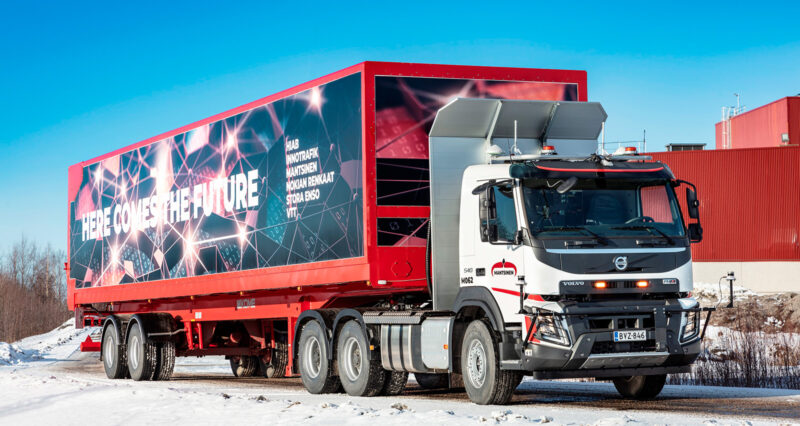
Shortage of labour in the forest sector will increase mechanical planting, for example, says Professor Kalle Kärhä from the University of Eastern Finland.
The shortage of labour experienced in the forest sector can speed up automation in the sector, says Professor Kalle Kärhä from the School of Forest Sciences at the University of Eastern Finland. Kärhä specializes in forest technology, especially in the digitalization of forestry operations and logistics.
In Kärhä’s thinking, automation covers such routine tasks as forest planting and certain standardized timber transport operations in the forest.
Mechanized planting of forest is not unknown in Finland, though the areas planted have been small. The machine creates a mound in the terrain and pushes the seedling into the soil. In China, mechanized planting has been used to prevent desertification.

Nevertheless, automation is not a simple solution. In forest terrain, stones, tree stumps, ditches, slopes and the weather create challenges to mechanical operations and bring the costs higher than with conventional human labour.
’Even if mechanical operations are more expensive than work by humans, I predict that they will gain ground. The availability of skilled labour will promote mechanization, and the quality of the result will be appropriate. For example, mechanical planting is not called into question anywhere. The quality is just as it should be,’ Kärhä says.
Increased shortage of labour in forest sector
The shortage of labour is expected to increase, with the diminishing number of babies born growing into adulthood. A megatrend affecting this phenomenon is urbanization, which leads the young to have an increasingly distant relationship to forests.
’Young people don’t necessarily want to work in the forest. And out of those who do, many gradually drift away, feeling that this wasn’t their thing. There just aren’t people willing to do it,’ Kärhä explains.
According to EURES statistics, almost half of the skilled labour in the forest sector are at least 50 years of age.
Russia’s war of aggression against Ukraine is another thing affecting the availability of labour. There will be a shortage, for example, of forest machine operators, timber lorry drivers and timberjacks. According to EURES statistics, almost half of the skilled labour in the forest sector are at least 50 years of age.
Tending young boreal forest stands is labour-intensive, but crucial for the growth of a commercial forest, and there is plenty of overdue work here. However, Kärhä does not believe that these tasks will be automated or mechanized in the near future.
Automation is speeded up by electrification
According to Kalle Kärhä, the electrification of forest machinery, similar to that seen with passenger cars, will speed up its automation and remote control. In Sweden, for example, there are visions of remote-controlled forestry work, where the worker controls regeneration felling and harvesting by means of monitors and control equipment without being in the forest.
A potential area of automation is the materials handling equipment in production facilities. An operator may cause a grabber to take hold of the timber, and the machine will complete the rest. This would boost efficiency, since one operator could simultaneously control several machine units.
Kärhä stresses that decision-makers should understand the importance of long-term investment policy and R&D funding.
’In order to boost competitivity in Europe, we need to invest in innovation in Europe. Successful development requires more than a couple of years. That’s too short a time for constructing new technologies. Quite easily, bringing them to the production stage can take ten years.’
As for harvesters working without operators, Kärhä does not think any will be seen actually in the forest within the nearest decade at least. Harvester automation is not an either/or issue; rather, it can be expected to proceed step by step.
Augmented reality to assist operators
One emerging technology is augmented reality, which will assist the harvester operator in making decisions. Kärhä estimates that this will be available within the current decade.
As an example, the harvester could tell the operator which tree to remove, that the strip road created for the machine has become too wide, or that a group of aspens should be left as retention trees. The technology is expected to make the operator’s work easier and to improve the quality of forest management and the flow of information in timber procurement.
It’s true that the price of sensors has come down in recent years. Ten years ago, a mobile laser scanner cost EUR 500,000, and just one tenth of that now. We must equip harvesters with sensors that can create a significant added value across the entire timber procurement chain.
During a felling, the harvester could automatically gather data on buffer zones along waterways, high stumps and the carbon footprint – even if Kärhä finds the mechanical observation of the environment to be ’one of the greatest challenges’ on the road towards automated harvesters. Still, no technology is of use until taken into practice. The deciding factor here may be the price.
’It’s true that the price of sensors has come down in recent years. Ten years ago, a mobile laser scanner cost EUR 500,000, and just one tenth of that now. We must equip harvesters with sensors that can create a significant added value across the entire timber procurement chain,’ Kärhä says.
’Implementing new technology is not the easiest of tasks. It can quite easily take up to ten years.’
No autopilots in harvesters
Automated harvesters which would accelerate, decelerate, take care of steering and observe their environment are not something Kärhä thinks likely to be found actually at work before the 2030s, even though the technology has been tested in electric cars and lorries.

At Stora Enso’s Uimaharju Mills in Eastern Finland, an automated lorry called AutoWood has been developed and tested. The lorry transported wood chips within the mill facility along a route of 2.6 kilometres. The route included traffic lights controlling traffic in the terminal facility within which the AutoWood lorry travelled. Its navigation and use of the correct file relied on sensors, satellite technology and aluminium poles along the route.
Eetu Dahl’s master’s thesis on the project found that automation reduces emissions, since it optimizes the lorry’s movement along the route. In the tests, automated operation consumed ten percent less fuel than with a human driver. An economical, automated lorry saves euros and frees one employer from monotonous driving to other tasks. That being said, an industrial facility is a less demanding environment than a forest site.
’An industrial facility is surrounded by a fence. The lorry won’t stray anywhere, but will stay nicely inside the fence,’ Kärhä notes.
Robot dogs in the forest?
In theory, a robot could even replace a forest professional checking the forest and stands marked for felling. On a visit to Sweden, Kärhä was introduced to a robot dog developed by the US company Boston Dynamics. In theory and equipped with the appropriate sensors, the robot could be sent to the woods to gather data for planning the marking of stands and fellings.
The drawback is the high price. A robot dog costs USD 100,000 (EUR 91,500), and to enable it to monitor forests, extra equipment costing at least USD 50,000 (EUR 45,800) would have to be added. Moreover, moving in forest terrain poses many problems.
’The robot dog is still a bit mobility-challenged. I’d say that for the next few years, we’ll rely on the mobility of human professionals,’ says Kärhä and continues:
’Thanks to the greater detail in aerial laser scanning data and the forest resources data gathered with drones, there is already less need for actual forest visits, and the trend will continue in the near future.’
- Read more: Forest company plans to process carbon dioxide from mills into bio products
- Read more: Wood to replace plastics, polystyrene, oil… Six important new products from Finnish bioeconomy
